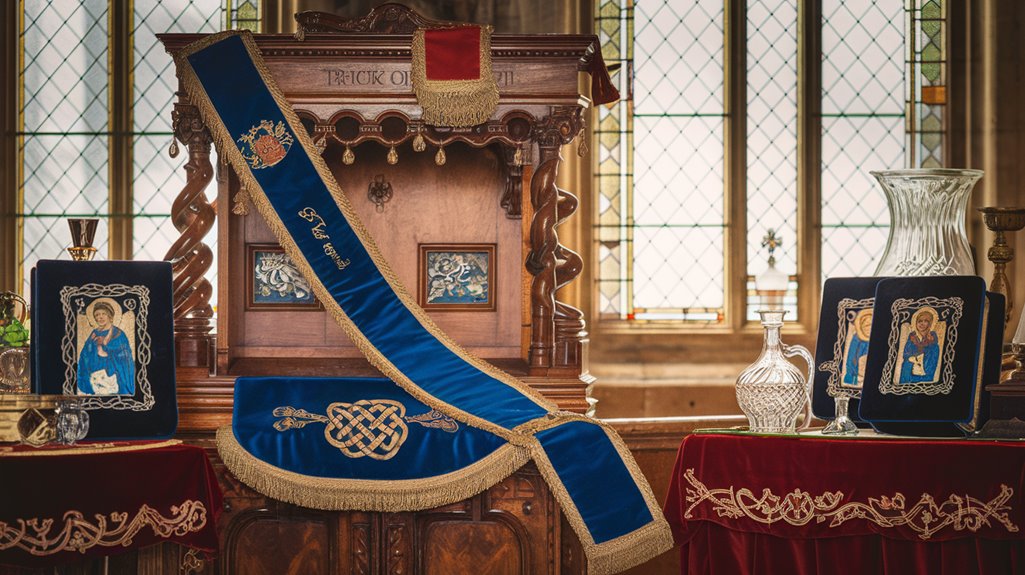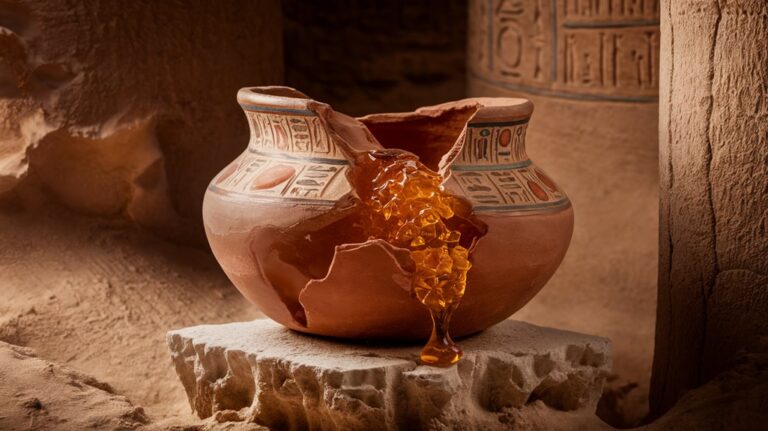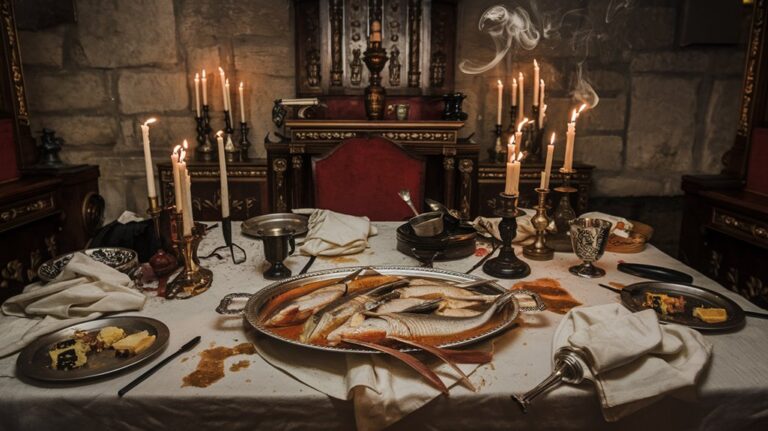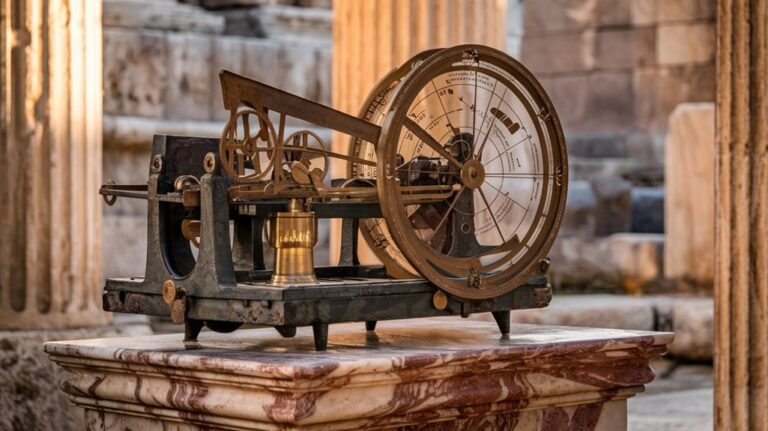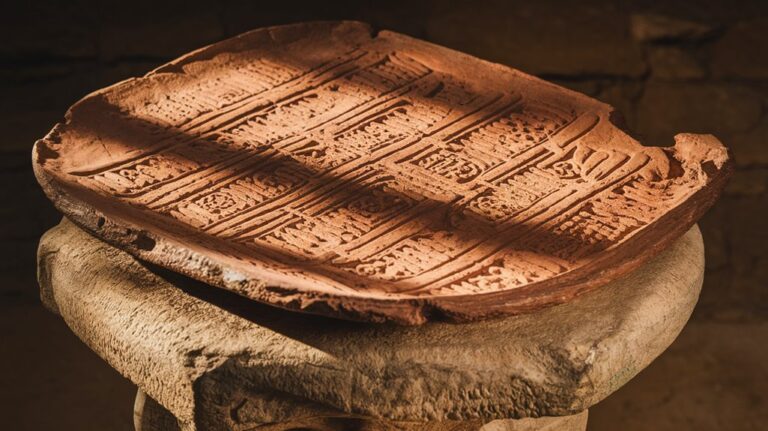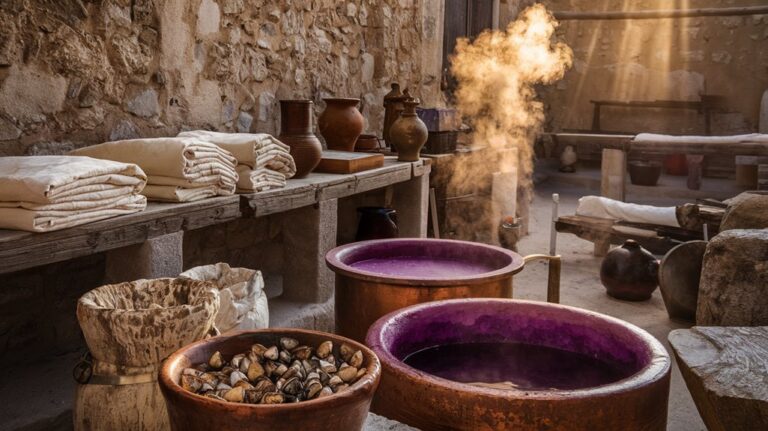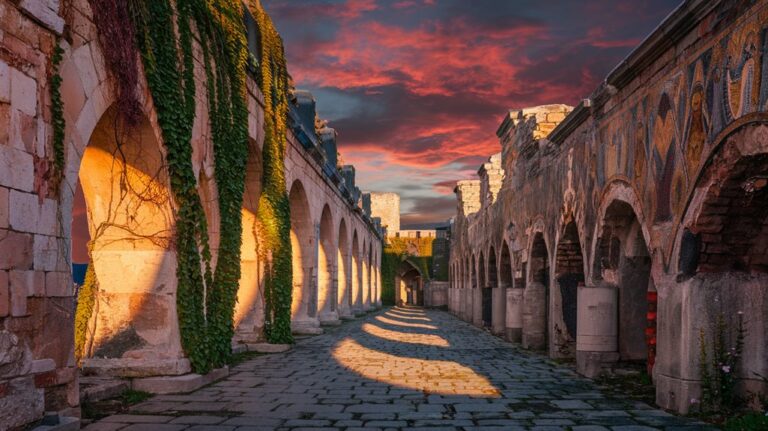St. Patrick Was Associated With Blue Before Green
You might think you know all about St. Patrick and his iconic green attire, but history tells a different story. The beloved patron saint of Ireland actually wore blue, not green, and this choice wasn't random. Blue held deep significance in Irish culture, representing both divine authority and royal sovereignty. Understanding this original connection helps unravel how modern St. Patrick's Day celebrations have shifted from their authentic roots, and why this matters for Irish cultural identity today.
The Ancient Irish Connection to Blue
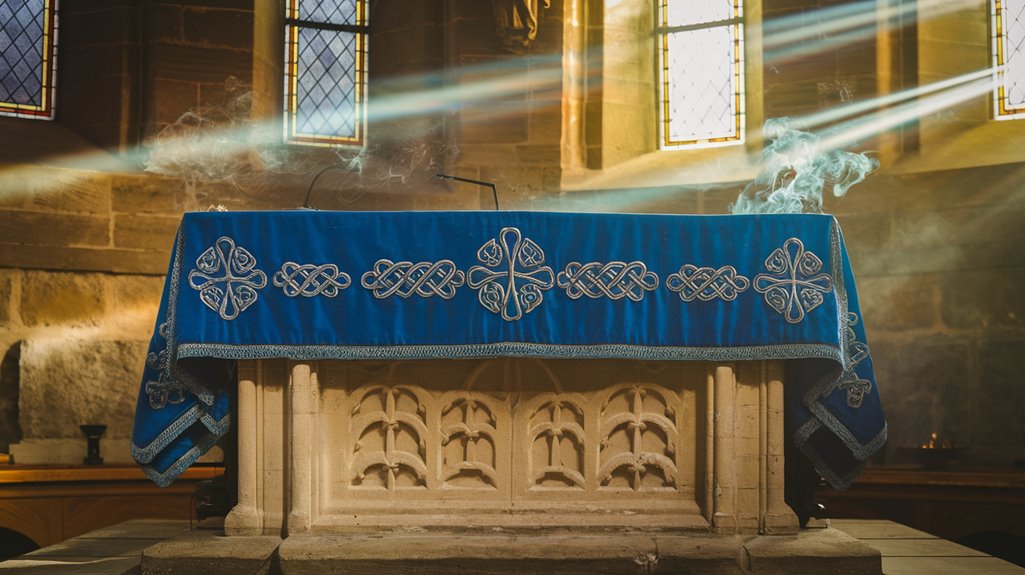
While many people associate Ireland with the color green today, the country's historical connection to blue runs remarkably deep.
You'll find the first formal use of blue in Irish color symbolism dating back to 1542, when King Henry VIII declared Ireland a kingdom and granted it a coat of arms featuring a golden harp on a blue background.
Early depictions of Ireland's patron saint showed him in blue colored robes.
Ancient blue associations extended into mythology, where Ireland's sovereignty was often depicted as a woman in blue robes, inspired by the 10th-century queen Gormfhlaith.
Evidence of this historical preference for blue emerged during the 2002 renovation of the Irish College in Paris, where workers discovered "St. Patrick's blue" paint on the chapel walls.
Even the province of Mide displayed this significant color, featuring a blue field in its arms.
This tradition of blue continued when George III created the Order of St. Patrick in 1783 as a way to reward political support in Ireland.
St. Patrick's Blue in Religious Art and Symbolism
The artistic depiction of St. Patrick in medieval manuscripts and church art reveals a consistent use of blue robes, challenging our modern association of the saint with green.
You'll find this blue-robed representation in several important historical sources, including the Legenda Aurea manuscript at the Huntington Library and the stained glass windows at Saul Church.
St. Patrick's iconography featuring blue wasn't arbitrary – it reflected deep cultural significance in Irish society. This symbolism was reinforced by the Order of St. Patrick established in 1783.
The blue robe symbolism carried profound meaning, representing authority and sovereignty in Celtic tradition. This connection is evident in the term "Gormfhlaith," which combines the Irish words for blue and sovereign. The earliest official Irish connection to blue emerged during King Henry VIII's reign in 1541.
The choice of blue in religious art aligned with Ireland's broader cultural understanding, where blue represented leadership and divine authority in both secular and religious contexts.
The Order of St. Patrick and Royal Blue Heritage
Founded in 1783 by King George III, the Order of St. Patrick established blue as its official color, cementing the hue's connection to Irish nobility and Royal ceremonies.
You'll find this distinctive "St. Patrick's Blue" prominently featured in the Order's insignia, from the badge's background to ceremonial regalia.
The Order's rich heritage is reflected in its distinctive elements:
- A shamrock-styled badge with crowns on each leaf
- An eight-pointed star featuring a green-enamelled trefoil
- A collar combining harps and roses with gold knots
- The Latin motto "Quis separabit?" meaning "Who will separate us?"
Originally designed with fifteen Knights-Companions, the Order expanded its membership over subsequent reigns. Though no new knights have been appointed since 1936, the Order technically continues today under Charles III, preserving this unique connection between Ireland's patron saint and the royal blue that preceded green as Ireland's emblematic color. Membership was historically limited to knights and gentlemen with noble ancestry, reflecting its exclusive nature.
How Green Replaced Blue as Ireland's Symbol
Although blue initially represented Ireland's sovereignty and St. Patrick, you'll find that green symbolism emerged through a fascinating cultural evolution.
The transformation began in the 1640s when the Irish Catholic Confederation adopted the green harp flag, marking a significant shift in national identity. Early Irish symbols featured royal blue flags during medieval times.
The change gained momentum when the United Irishmen embraced green in the late 18th century as a symbol of nationalism.
You'll notice that several factors contributed to this alteration: the verdant Irish landscape, the symbolic green shamrock St. Patrick used to explain the Trinity, and the tradition of wearing green ribbons on March 17th since the 1680s.
The color's significance reached its peak with the 1848 introduction of the Irish tricolor flag, where green represents the country's Catholic majority and Gaelic heritage. Thomas Francis Meagher made history when he unveiled the tricolour at a gathering in Waterford.
Blue's Modern Legacy in Irish Culture
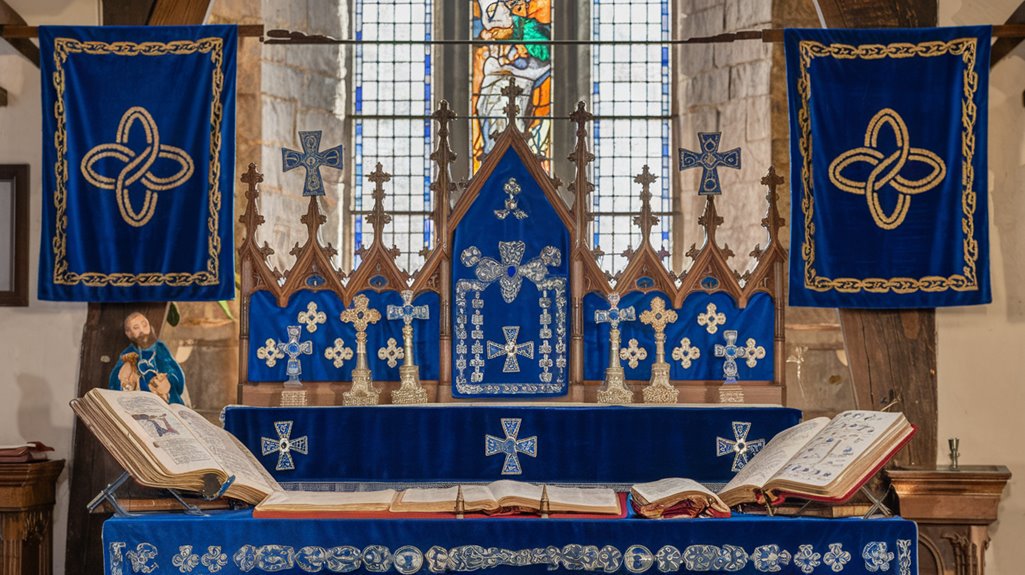
While green dominates modern Irish symbolism, blue's legacy endures in significant ways throughout Ireland's cultural landscape.
You'll find this rich cultural heritage preserved in state symbols, historical buildings, and traditional artwork across the country.
The blue symbolism remains particularly visible in:
- The azure background of Ireland's official coat of arms
- Historic stained glass windows depicting St. Patrick in blue robes
- The prestigious Order of St. Patrick's distinctive light blue color
- Ancient Irish texts referencing "Gormfhlaith" (blue sovereignty)
Though not as prominent as green in popular culture, blue maintains its dignified place in Ireland's official heraldry and academic discourse.
You can still discover this historical connection in places like the Irish College in Paris, where St. Patrick's Blue adorns the chapel walls, offering a tangible link to Ireland's past.
The Irish President's flag features the traditional blue and harp design, continuing centuries of heraldic tradition.
The University College Dublin proudly displays St. Patrick's Blue in their official sporting colors since 1910.




